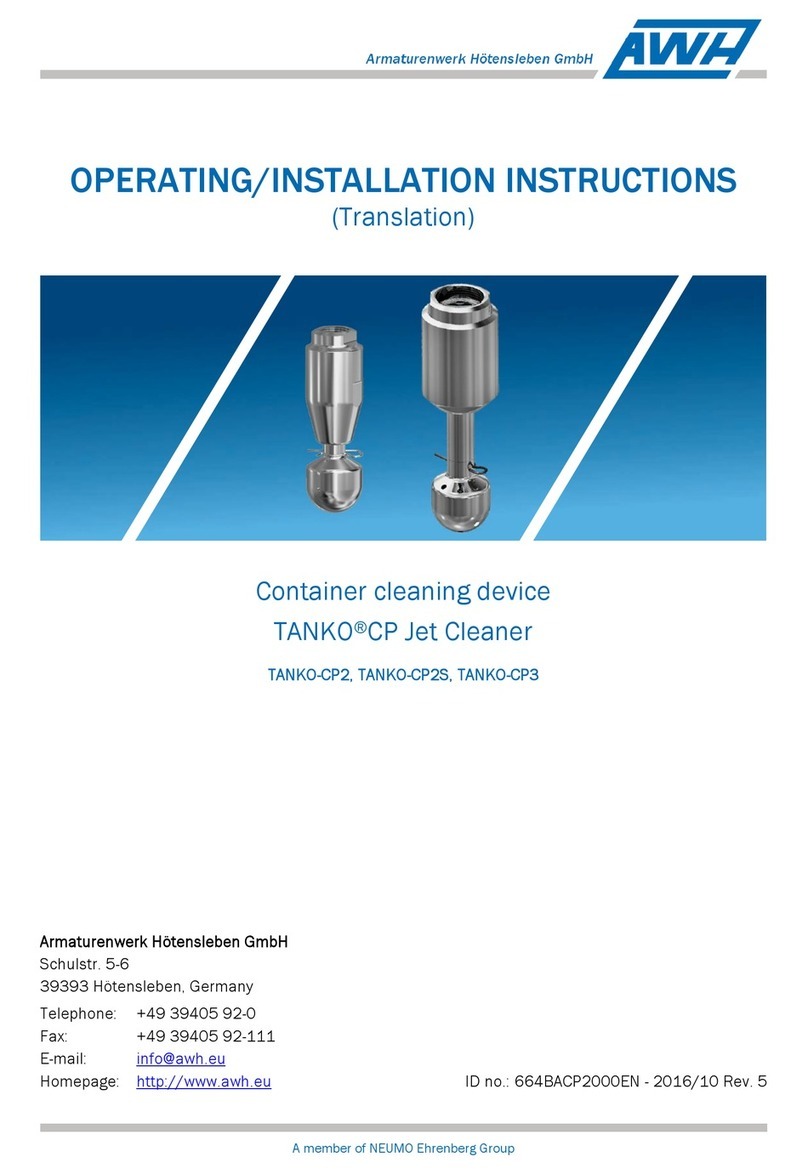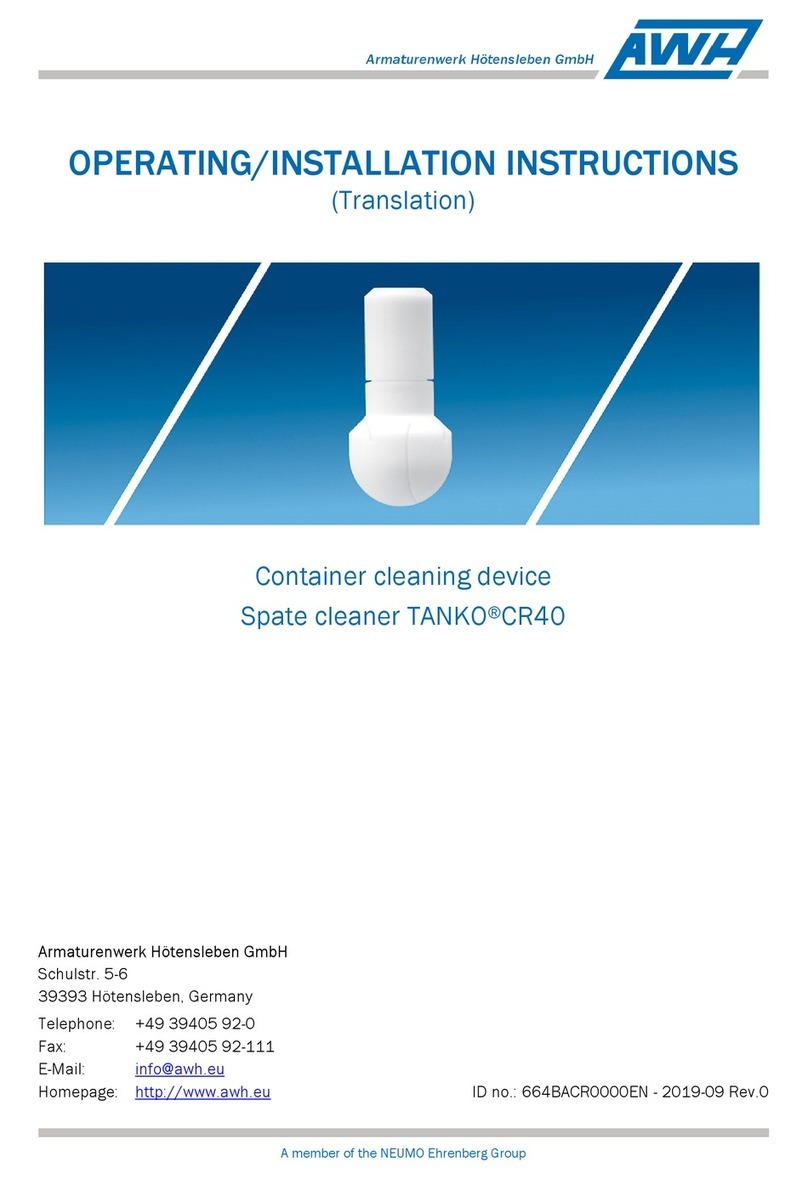
ATEX Jet Cleaner TANKO-JX
Contents Translation of the original operating/installation instructions 2021/04 I
Contents
Contents ......................................................................................................................................................I
List of Figures ............................................................................................................................................III
List of Tables............................................................................................................................................. IV
Abbreviations and Units............................................................................................................................. V
1 Introduction ............................................................................................................................................ 1
1.1 Means of Presentation.......................................................................................................................... 1
1.1.1 Explanation of Signal Words....................................................................................................... 1
1.1.2 Explanation of the Warnings ...................................................................................................... 2
1.1.3 Pictograms and Symbols ............................................................................................................ 4
1.2 Warranty and Liability............................................................................................................................ 5
1.3 Product Names and Trademarks.......................................................................................................... 5
1.4 Related Documents............................................................................................................................... 5
2 Safety...................................................................................................................................................... 6
2.1 Intended Use.......................................................................................................................................... 7
2.2 Spare Parts, Replacement Parts and Accessories ............................................................................ 13
2.3 Duties of the Operating Company ...................................................................................................... 13
2.4 Requirements for Personnel............................................................................................................... 16
2.4.1 Personal Protective Equipment................................................................................................ 17
2.5 Marking ................................................................................................................................................ 18
2.5.1 Type Designation....................................................................................................................... 18
2.5.2 Type Plate .................................................................................................................................. 18
2.5.3 Marking for Explosion Protection ............................................................................................. 18
3 Construction and Function ...................................................................................................................30
3.1 Construction......................................................................................................................................... 30
3.1.1 Special Designs......................................................................................................................... 31
3.2 General Function Description ............................................................................................................. 37
3.2.1 JX Function ................................................................................................................................ 39
3.3 Technical Data..................................................................................................................................... 40
3.4 Cleaning Media.................................................................................................................................... 43
4 Transportation and Storage..................................................................................................................49
4.1 Packaging............................................................................................................................................. 50
4.2 Transportation ..................................................................................................................................... 51
4.3 Storage................................................................................................................................................. 51
5 Installation............................................................................................................................................ 53
5.1 Safety Instructions for Installation ..................................................................................................... 53
5.2 Installation ........................................................................................................................................... 59
5.2.1 Interfaces................................................................................................................................... 60
































